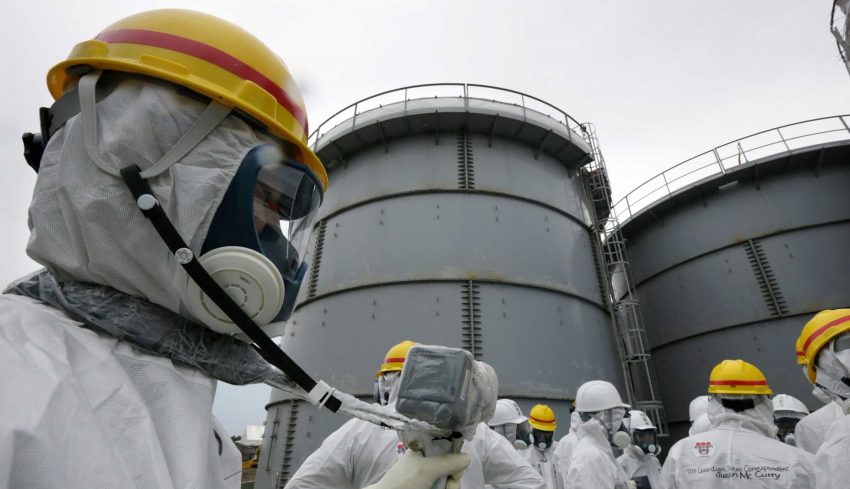Seawater samples taken following the release of wastewater from the crippled Fukushima Daiichi Nuclear Power Plant showed radioactivity levels well within safe limits, operator Tokyo Electric Power Co. (Tepco) said.
The discharge of some of the 1.34 million tons of water — collected on site in the 12 years since the facility was damaged by a tsunami generated by a 9.0-magnitude earthquake — on Thursday prompted China to ban all Japanese seafood imports.
Tepco took what it called rapid tests on Thursday afternoon after the water release into the Pacific Ocean began, and said on Friday the results showed that radioactivity levels were within safe limits.
“We confirmed that the analysed value is equal to the calculated concentration and that the analysed value is below 1,500 bq/L,” Tepco spokesman Keisuke Matsuo told a news conference, using the abbreviation of becquerels per liter, which is a measure of radioactivity. The national safety standard is 60,000.
The results were “similar to our previous simulation and sufficiently below” the safety limit, Matsuo said.
“We will continue to conduct analysis every day over the next one month and even after that, maintain our analysis effort,” he added. “By providing swift, easy-to-understand explanations, we hope to dispel various concerns.”
Japan’s Environment Ministry said it had collected seawater samples from 11 different locations on Friday, the results of which would be released on Sunday.
The country’s fisheries agency also pulled a flounder and a Gurnard fish on Friday morning from designated sampling spots near the pipe that released the Fukushima water.
“By publishing those data every day in a highly transparent fashion, we will demonstrate our actions based on scientific evidence,” said Trade Minister Yasutoshi Nishimura, who is in charge of nuclear policies.
Tepco says the water — more than 500 Olympic pools’ worth — from cooling the remains of three reactors has been filtered of all radioactive elements except for tritium, and is safe.
This is backed by the International Atomic Energy Agency (IAEA), which said on Thursday that samples taken from the first batch of diluted water prepared for discharge showed that tritium levels were well within safe limits.
“AEA experts are there on the ground to serve as the eyes of the international community and ensure that the discharge is being carried out as planned consistent with IAEA safety standards,” IAEA Director-General Rafael Grossi said in a statement.
Most analysts agree, although environmental pressure group Greenpeace has said the filtration process, known as ALPS, does not work and that a vast amount of radioactivity will be released into the ocean.
Japan’s move infuriated China, which says the action contaminates the ocean, and widened a ban on aquatic produce in place for 10 Japanese prefectures to cover the whole country.
Nishimura on Friday echoed Prime Minister Fumio Kishida in urging China, Japan’s biggest market for seafood, to reverse the ban.
“The Japanese government… will strongly demand baseless regulations to be immediately terminated,” the Trade minister said.
South Korea’s government, which is trying to improve relations with Japan in order to counter China, has endorsed the water release, although some ordinary people are alarmed. Matthew Miller, a United States State Department spokesman, said Washington is satisfied with Japan’s safe, transparent and science-based process.
